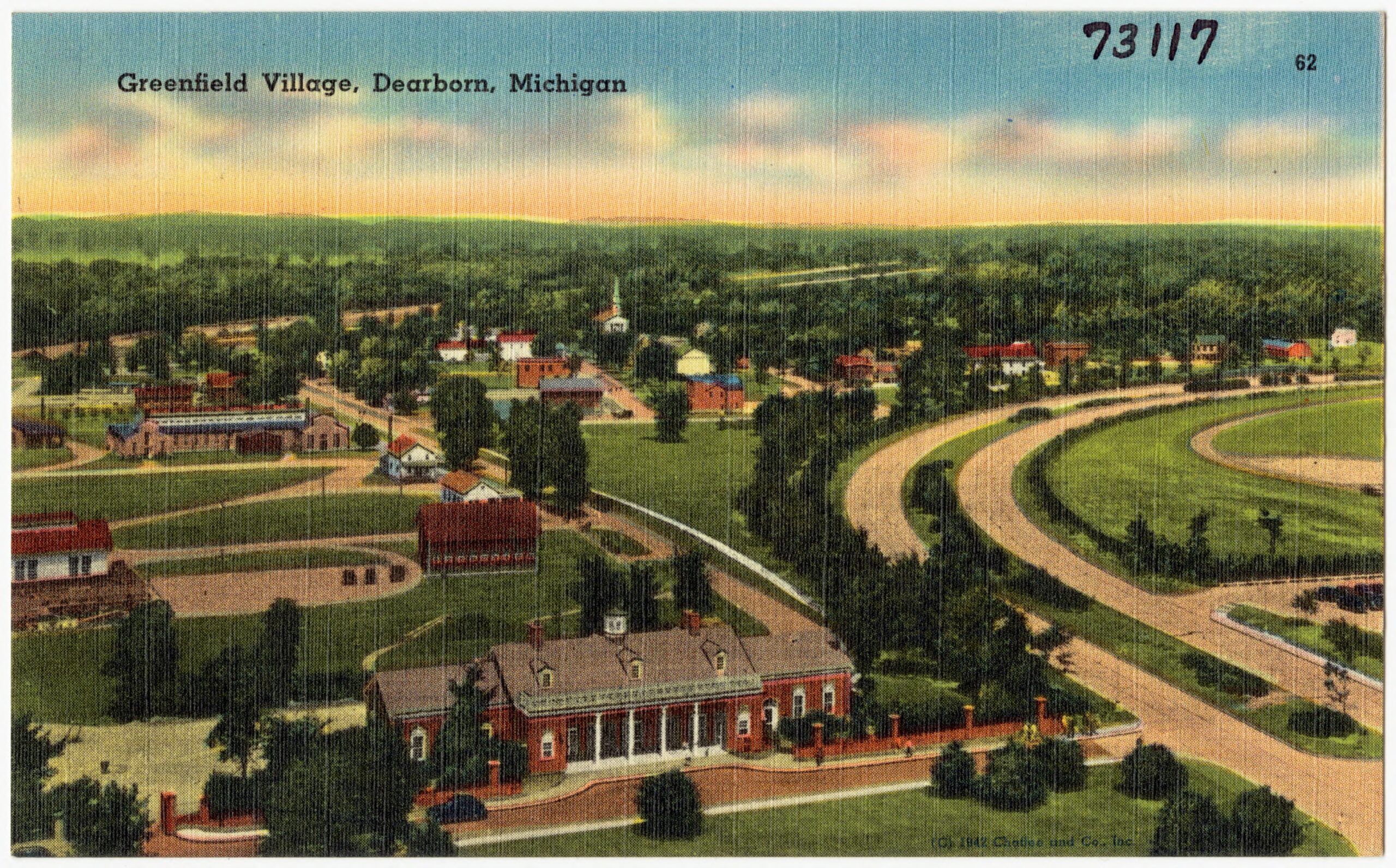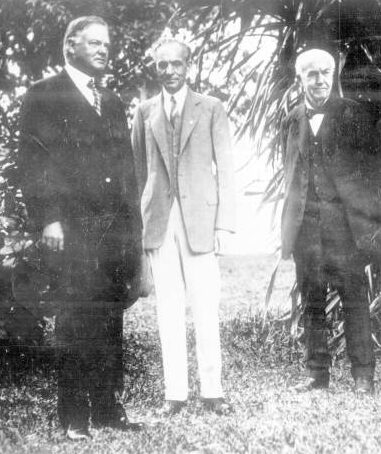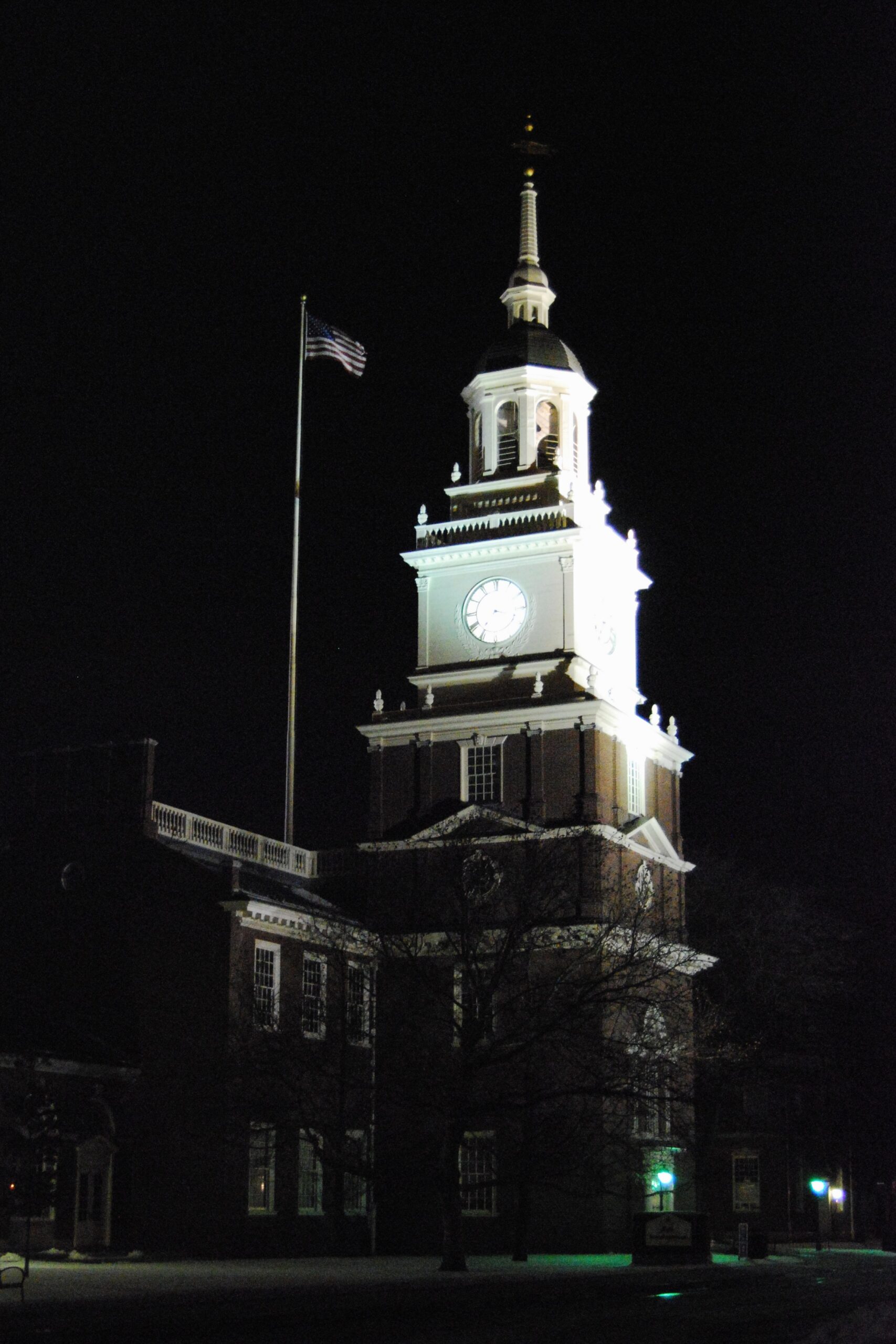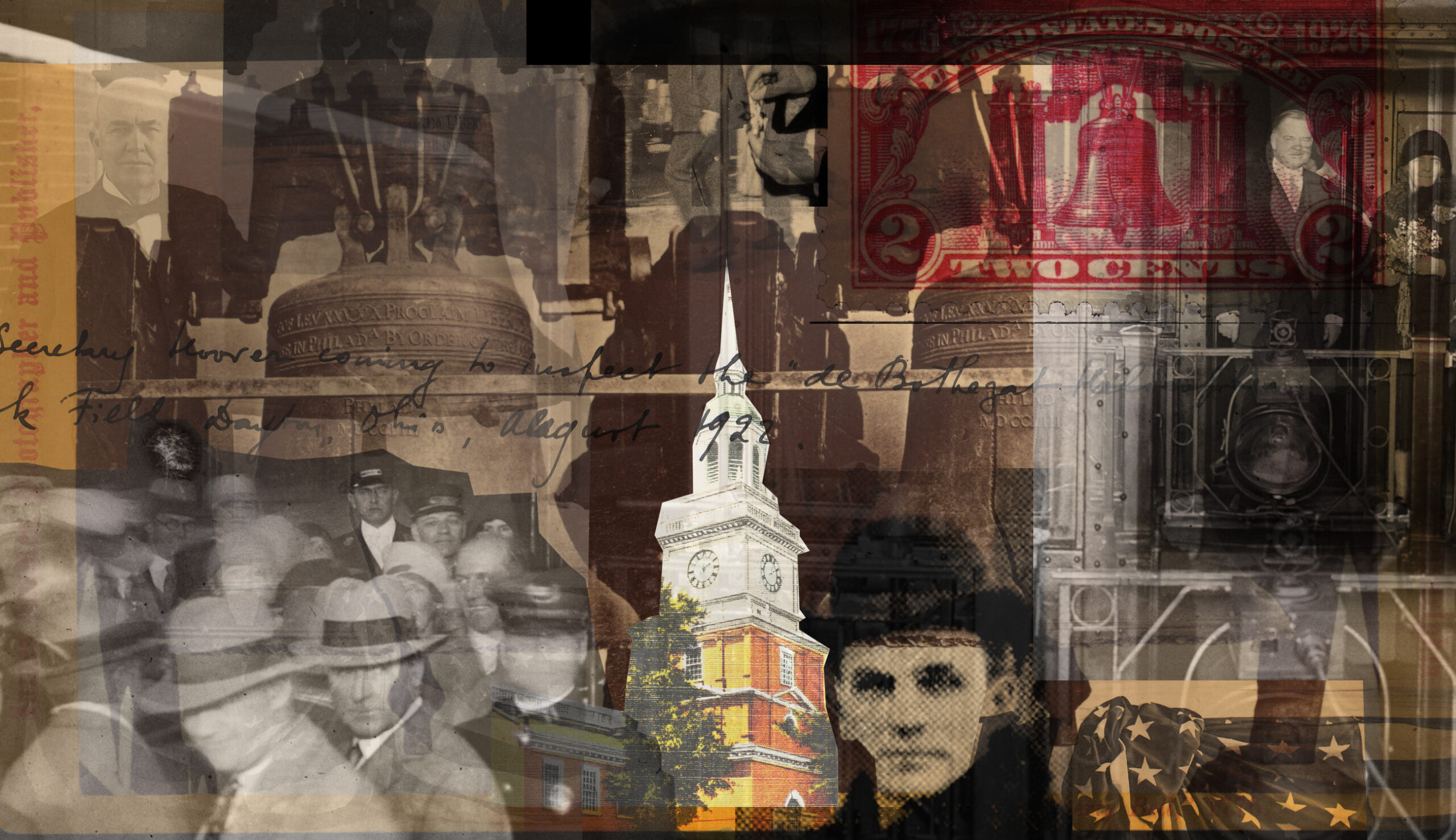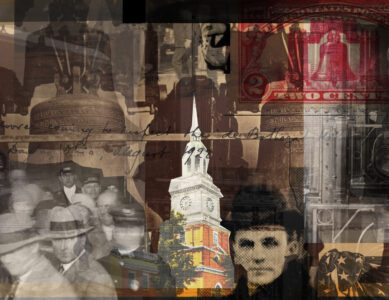Ticking time
Five months in, and the 55-year-old president is already tired. He stayed up too late last night — not celebrating his landslide victory with ardent supporters or charming foreign heads of state. Sitting alone beneath a single desk lamp in the otherwise dark White House, he carried out the necessary mundane tasks of the Executive Office. Getting up to speed on a contentious congressional fight. Running through his upcoming speeches. And so many signatures. If history remembers him, there’ll be no shortage of his autograph for collectors.
At 4:00 PM, he boards the 9-car presidential train at Washington’s Union Station. The 17-hour trek — his first major tour of the country as chief executive — will cross rural Maryland, traverse the Allegheny mountains in Pennsylvania and roll through Youngstown, Cleveland and Akron, Ohio, before arriving in Detroit, Michigan, the next day. A self-made mining millionaire, the president is no stranger to the lifestyles of the rich and famous, but the next 38 hours will be off the charts.
Herbert Hoover has exactly ten days before the shit hits the fan.
Everything old
In Michigan, he steps back in time and out of the spotlight. Sort of. When Henry Ford throws a party for Thomas Edison, third fiddle is the best you can hope for.
In recent years, the auto magnate has turned his attention and fortune toward preserving and replicating objects of Americana he fears might otherwise be forgotten. The three men and their spouses, Lou Henry Hoover, Clara Bryant Ford and Mina Miller Edison, board a faithful replica of a Civil War-era Bangor & Aroostook passenger rail coach pulled by a newly restored 1858 Rogers steam locomotive engine called Sam Hill. While the newsreels will describe their ride as an “ancient train of the ’60s,” the car they’re in is actually so new the multiple coats of varnish on its wooden walls might still be tacky to the touch. Ford’s artisans have spent hundreds of hours setting the scene for the next 25 minutes.
Complete with mohair-covered seats (reversible so passengers can always see where they’re going), a water fountain, a wood-burning stove and a private privy (a wooden seat through which you can see the tracks you’re whizzing on whizz by below), this should feel familiar to the 82-year-old Edison. That is if he remembers 1862.
A 15-year-old Edison worked as a news butcher for the Michigan Central Line on this same set of tracks, selling newspapers, candy and cigars to passengers on cars just like the one he now shares with America’s second-most-famous man and the President of the United States. As the train sets off with its esteemed guests and a few members of the press, Edison indeed remembers 1862 as he works the three-car train selling fruit and newspapers to a delighted audience, some of which demand exact change from the millionaire.
Even as a boy, Edison was working a side hustle. When sales were slow, he’d conduct chemistry experiments in a makeshift lab in the baggage car. As should come as a surprise to precisely no one, the 15-year-old boy’s chemistry experiments on a moving train turned explosive. An irate conductor threw the young offender off his train at Smiths Creek Depot, 15 miles southwest of Port Huron.
Notwithstanding the boom boom, Edison earned his railroad stripes that same year when he rescued a three-year-old from being killed by a runaway train. The child’s father, a station agent, was so grateful he taught the teen how to operate a telegraph machine. The octagenarian inventor can be forgiven for his confusion when he and the rest of the party step off the ancient train and into the very same Smiths Creek Depot where he landed on his butt so many years ago. They’re not in Smiths Creek, some 57 miles away. Ford has painstakingly relocated the entire station to his sprawling Dearborn estate just for this moment. A cold, steady rain beats down as the party detrains. A reporter shouts, “Mr. Edison, do you need an umbrella?” “No,” he replies. “I’m having my picture taken.”
In the months leading up to this week’s festivities, Ford also made a pilgrimage to Edison’s former campus at Menlo Park, New Jersey. He was shocked to see squatters living in many of the buildings with nary a sign of the world-changing work his friend and former boss conducted there some fifty years prior.
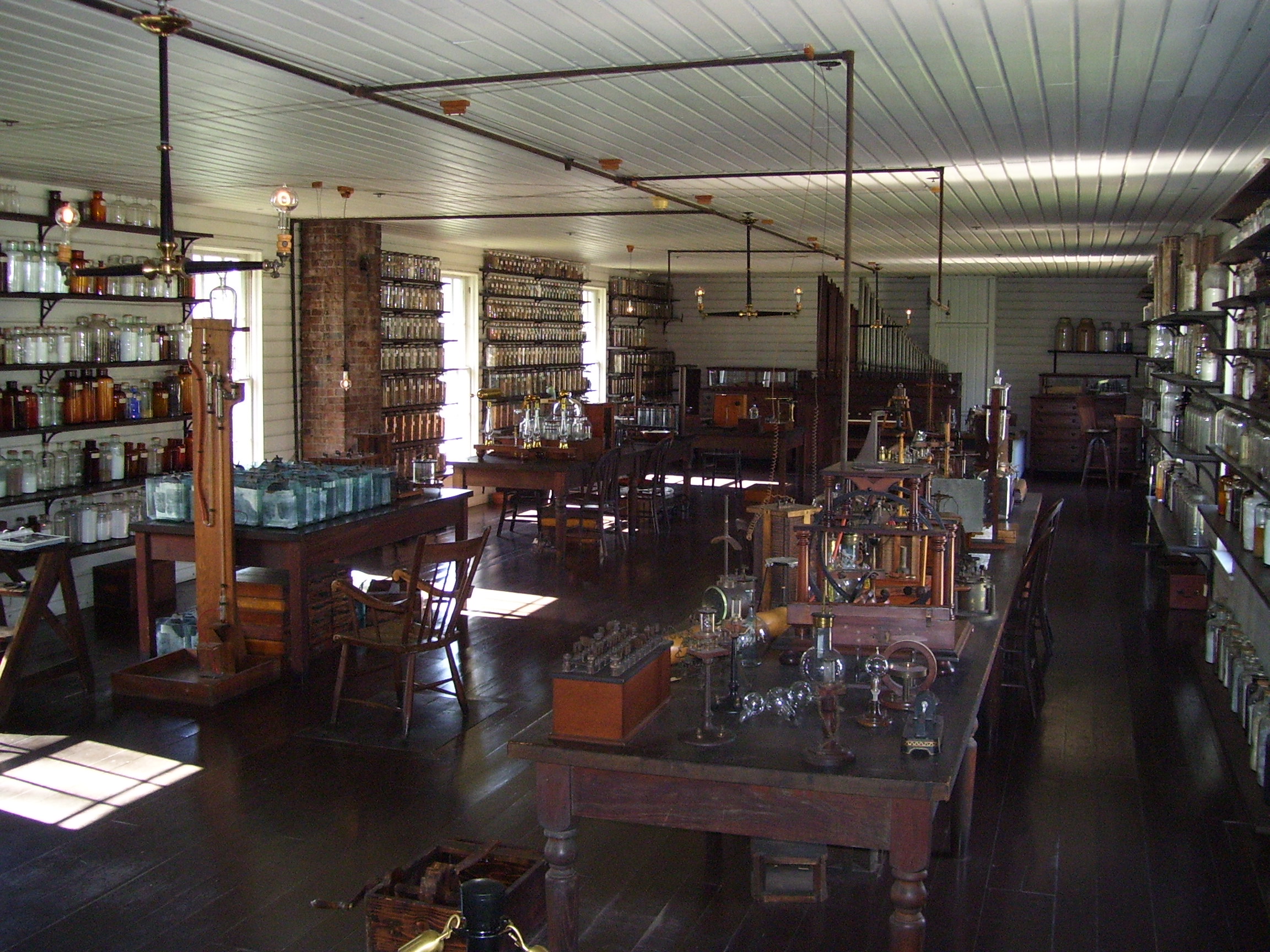
Salvaging all he could and putting out a call for period equipment, Ford built a convincing replica of Edison’s lab on his property. He dubs his budding utopia Greenfield Village and plans to open it to the public as a living history museum. While the celebration centers on Edison’s replica lab, it’s not Greenfield Village’s centerpiece. A brick-for-brick replica of Philadelphia’s Independence Hall, the first of its kind, stands a quarter-mile away, ready to show five hundred guests the time of their lives.
Coming out of the dark
Ford has gathered the Edisons, the Hoovers, and a selection of dignitaries from science, industry and entertainment — including Marie Curie, Will Rogers, George Eastman, John D. Rockefeller Jr., Orville Wright, Charles M. Schwab and a 17-person delegation from Japan — to mark the fiftieth anniversary of Edison’s use of bamboo filament to create a commercially viable incandescent light bulb.
Billed as Light’s Golden Jubilee, it will be the world’s largest light show. While the entire globe has been encouraged to participate, the events at Greenfield Village will not be open to the public. A press release tries hard to sell the advantage of listening to a light show on the radio: “It is suggested that citizens in their homes, around the radio, will be more intimately near the proceedings at Dearborn than will those who actually come out here.” The article goes on to remind readers the museum is not yet open, and a visit at this time would only lead to disappointment.
Before the festivities kick off, the party takes a private tour of the village. Edison marvels at how much his replica lab looks like his old lab. A Secret Service motorcade drives the president and first lady back to Detroit through rain, then sleet, then snow, then rain again. Undeterred, thousands line the Motor City streets, hoping to catch a glimpse of the passing procession. The motorcade stops briefly to roll down the top of the presidential car. Despite the downpour, Lou Henry Hoover’s smile never leaves her face as she greets an adoring crowd. By the time they reach City Hall for the president’s speech, the couple is drenched. Prepared for all threats but inclement weather, the Secret Service finds a heavy-set man and commandeers his raincoat with a promise to return it tomorrow. When he sees who it’s for, Michigander Donald Henderson does not care if he gets his coat back.
When Hoover returns to Dearborn to tour Ford’s River Rouge plant, he reverts from president back to engineer*, marveling at the world’s largest integrated factory, nerding out on the Model A assembly line and asking astute questions all along the way. The president then heads to Ford Airport to observe the conclusion of the fifth annual National Air Tour. Later that evening, the dirigible Mayflower from the Goodyear Rubber Company will hover over Greenfield Village with its gigantic lighted message: Greetings Edison.
At 6:15 PM, as the Ford Old-Time Orchestra plays the hits of 1879, the automaker’s distinguished guests step out of the driving rain to take their seats in his brand-new Independence Hall. The sweet perfume of yellow roses masks any lingering new construction smells. The golden glare of tallow candles illuminates the room. Freshly printed notecards perfectly placed on each plate set the evening’s tone:
Since the beginning, darkness has always pressed terrifyingly upon the earth … driving men inward, closer towards the dying campfire, closer towards the ashes of the hearth, closer towards the guttering light of candles or of smoky oil. Danger walked always in the darkness; and crime, disease, fear stalked in the dark lanes of congested cities. Into this darkness 50 years ago, Edison, your guest, flashed the spark which lighted the world.
Going global
Thanks to Ford’s showmanship and the latest short-wave radio technology, Light’s Golden Jubilee will be heard by millions worldwide. Corresponding light shows are planned in dozens of cities. In New York, Broadway will shift from the Great White Way to the Great Gold Way for one night only, swapping millions of bright white bulbs out in favor of the golden glow of old-school Edison incandescents. The Brooklyn Bridge is wrapped with strings of gold lights.
At the South Pole, Commander Richard Byrd, on his first Antarctic expedition, sits next to his radio, waiting for the show to start some 9,100 miles away.
Radio listeners are encouraged to turn off their electric lights as the program begins. The broadcast alternates between three radio announcers stationed in Ford’s Independence Hall, where diners wait with bated breath, his Menlo Park replica, where the Fords, Edisons and Hoovers are stationed, and the Dynamo room, where the switch will be flipped to light up the world.
Flanked by Francis Jehl, his assistant from a half-century ago, Edison will be cued to light a single incandescent bulb. But he’s grown weary of the radio man’s hype job. “What’s that all about?” Edison grumbles as he leans back, bored in his wooden kitchen chair. After a few more minutes of blathering, it’s go-time.
“Light ‘er up, Francis, light ‘er up.” Edison musters, with the most excitement he’s shown all night.
Freedom rings
With the Hoovers and the Fords standing in the darkness behind Edison, one modest bamboo filament bulb flickers to life. Just then, the massive switch in the Dynamo room is flipped, and millions of bulbs crackle to life, bathing Ford’s campus in shimmering light. Floodlights illuminate the brand-new Independence Hall from every side. A thousand automobile headlights, mounted throughout the campus, beam high into the rainy night sky, fanning out behind the building and sanctifying this brand-new Old Pennsylvania Statehouse. As floodlights hit the bell tower, Ford’s pristine Liberty Bell replica tolls for the first time, signaling those listening at home to switch their lights back on. Partygoers are jarred by its sheer volume.
With Liberty Bell replicas, as with automobiles, Henry Ford wasn’t the first, but he was the most flamboyant. The Meneely Bell Company of Troy, New York, had cast Liberty Bell replicas for the women’s suffrage movement in 1917 and the short-lived Mid-European Union in 1918. A $2,800 contract signed by his son and company president, Edsel B. Ford and Chester R. Meneely, stipulated, “The bell shall be made from the finest brands of new Lake Superior copper and new block tin … and shall be guaranteed against fracture or failure of tone for a period of fifteen years after acceptance.”
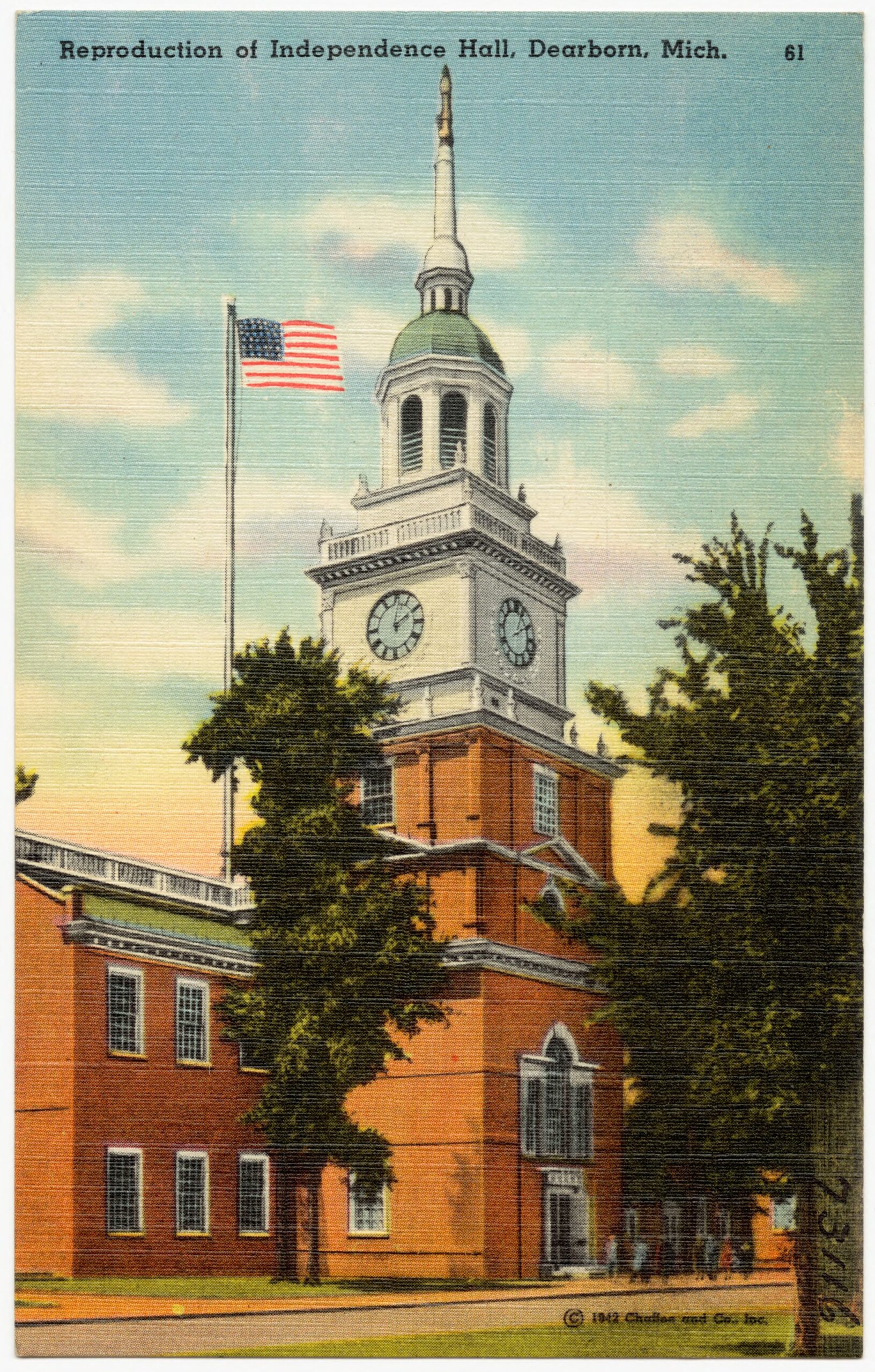
The darkness
The self-made billionaire with his own personal Liberty Bell didn’t trust institutions (like labor unions) to help advance the cause of individual liberty.
“People are never so likely to be wrong as when they are organized. And they never have so little freedom. … The most closely organized groups … have been the least friendly to the people’s progress and liberty.”
Ford also detested organized charity, claiming it “degrades recipients and drugs their self-respect.” Instead, he opted for a more personal approach. A century before Oprah handed out cars like they were candy, the man who put the Ford in affordable liked to spread the love. When a friendly farmer helped pull his car out of the mud, not knowing the automaker (or his passengers, including President Warren G. Harding) from Adam, Ford thanked him with a brand new Model T. When his neighbors seemed like they needed new cars, he hooked them up. But in 1920, Rabbi Dr. Leo Franklin, who lived down the block, sent his Model T back with a polite note explaining why he couldn’t accept.
The previous year, Ford had purchased the sleepy, struggling Dearborn Independent newspaper for $1,000. Under his own name, likely ghost-written by editor William Cameron, Ford published a weekly front-page column. He didn’t use his newfound media platform to extol the benefits of industrialism or paint an idealized picture of an automobile-centric future of two-car garages, six-lane highways and miles-wide parking lots. Instead, he used the column titled, The International Jew: The World’s Problem, to — you guessed it — blame the world’s problems on Jewish people.
Sure, everyone in 1919 was terrible, so why is it relevant in a piece about a Liberty Bell to dig up a 100-year-old story about a populist, union-busting automobile magnate who buys a media outlet, uses said media outlet to fan the flames of white nationalist ideology, then — when called out by the Anti-Defamation League — doubles down and blames Jewish people for creating antisemitism? Oh, I guess some stories are just timeless.
Ford’s arguments were largely plucked from the 1903 literary forgery, The Protocols of the Elders of Zion. Purportedly written by the Elders themselves — a shadowy cabal of globalist Jews who are also Freemasons, because of course they are — the book lays out their plan to control world finance and politics, including the assassination of President William McKinley, which conveniently happened after the book was supposedly written and before it was discovered.
Running for 91 consecutive weeks, Ford’s column accused Jewish people of the usually-suspected conspiracies: controlling world banking, Hollywood and Broadway. But the born innovator added his own theories to the mix, blaming Jews for agricultural depression, why baseball sucks, the inefficiency of the Navy, labor strikes, liquor bootlegging† and jazz.”
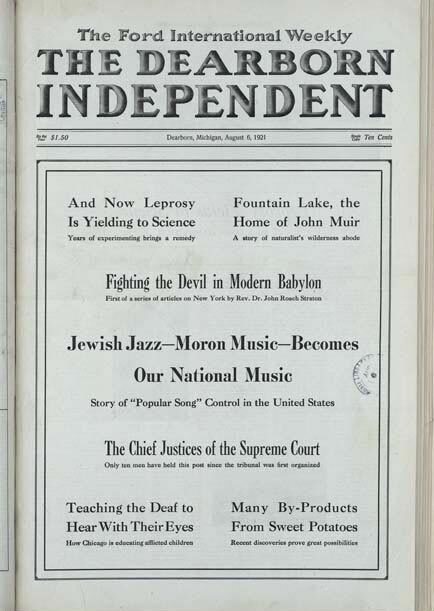
Mass production
But how much influence can a small-town newspaper wield? In the hands of Henry Ford, just as much as you’d think. If you lived in Peoria, Illinois and bought a 1921 Mode T, it likely came with a fresh copy of the Dearborn Independent on the driver’s seat. Ford forced his dealers to conduct subscription campaigns, growing the distribution of a newspaper for a town of 50,358 residents to over 900,000, becoming one of the nation’s most read.
Ford then published all the columns together in a 4 volume hardbound series, selling 200,000 copies in multiple languages worldwide. Notably, the man whose name is synonymous with industrial capitalism chose not to copyright his tome, thereby allowing it to be freely copied and republished anywhere by anyone. And it has.
In 1931, Annetta Antona of the Detroit News was in Berlin to interview a 42-year-old German party leader and presidential hopeful. Hitler. It was Hitler. Surprised to see a familiar face in a picture frame behind his desk, she prodded the politician to explain. “I regard Henry Ford as my inspiration,” replied the future führer.
At his Nuremberg trial, Hitler Youth leader Baldur von Schirach — before he was found guilty of sending thousands of Viennese Jews to their deaths — credited a German translation of The International Jew for instilling his antisemitism. “If Henry Ford said that Jews were to blame, why, naturally, we believed him. You have no idea what a great influence this book had on the thinking of German youth.”
In 1927, facing boycotts, Ford issued a tepid apology for blaming the world’s problems on Jewish people and shuttered The Independent. In 1938, he accepted the Grand Cross of the Supreme Order of the German Eagle as a 75th birthday present from Hitler, becoming the first American to receive the highest Nazi honor given to non-Germans.
Glory days
But on this rainy, muddy October night in 1929 in Dearborn, Michigan, the future’s so bright, they ought to be wearing shades.
The reenactment of Thomas Edison rescuing the world from darkness complete, Hoover now has to shift from fanboy engineer back to president to deliver another speech, this time to radio listeners worldwide. But he’s having too much fun to pull it off. Detriot Free Press reporter Willam C. Richards describes the president’s demeanor, “He gave himself over to a homely humor. His tone was that of a whimsical fisherman of the Rapidan rather than the formal voice of the head of a great state.” Hoover thanks the inventor for making reading in bed infinitely more comfortable and doubles down on deifying Edison:
By merely touching a button, we have introduced the element of surprise in dealing with burglars. The goblins that once lived in dark corners and under the bed have now been driven to the outdoors. … By all its multiple uses, it has lengthened the hours of our active lives, decreased our fears, replaced the dark with good cheer, increased our safety and decreased our toil.
At midnight, as the floodlights blaze and the party carries on, the Hoovers quietly board a train bound for Cincinnati, where tomorrow the president will dedicate a memorial to improvements made to the Ohio River. Boooooring.
They weren’t all happy days
Seven days later, spurred by declining real estate property values, stock market prices dipped. That led to panic selling. That led to a lot more panic selling. That led to the worst economic downturn in the history of the civilized world, which lasted nearly a decade.
Overnight, Hitler had a lot more to blame on Jewish people.
In Detroit, automakers felt the pinch. Ford’s 128,000 employees dwindled to 37,000 by 1931. Only half of the American car companies that entered the Great Depression survived it.
In 1932, Herbert Hoover lost the presidency to Franklin Delano Roosevelt in a landslide even larger than his own 1928 victory. Largely (and arguably unfairly) blamed for not seeing the Depression coming, Hoover remained wildly unpopular while nonetheless leading a productive post-presidency as an author and public servant. When the Nevada dam that now bears his name was dedicated in 1935, FDR didn’t invite him to the ceremony or mention his name.
Thomas Edison died in 1931. If you visit Greenfield Village, now called The Henry Ford, you can see the Wizard of Menlo Park’s soul in a test tube — that is if you believe such things can be captured in such ways, as Henry Ford seemed to have. When the inventor’s death was imminent, he asked Edison’s son to capture his father’s last breath in hopes that one day it might be used to reanimate his friend — just in case we needed him to once again flip the switch, ring the Liberty Bell and bring the world out of darkness.

* Hoover’s degree from Stamford’s inaugural class was in Geology, though he would self-identify as an engineer throughout his career.
† While a globalist Jewish cabal didn’t control American bootlegging, in Michigan, The predominantly Jewish Purple Gang ‡ — the most successful and ruthless of Detroit’s competing ethnic mafias — ran the local liquor racket with near impunity for years.
‡ If The Purple Gang sounds familiar today, it’s likely from Leiber and Stoller’s lyrics to Elvis Presley’s Jailhouse Rock: “The whole rhythm section was the Purple Gang.”
